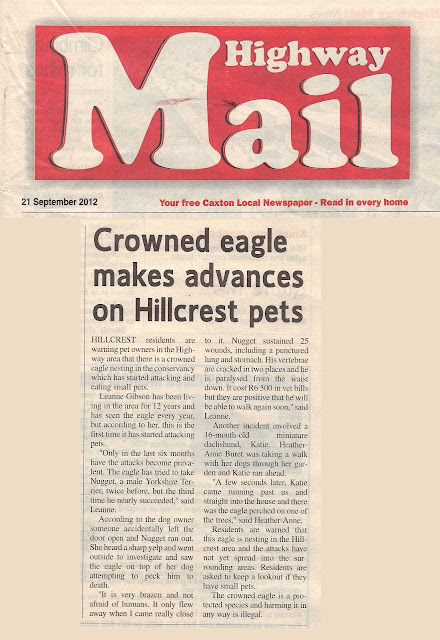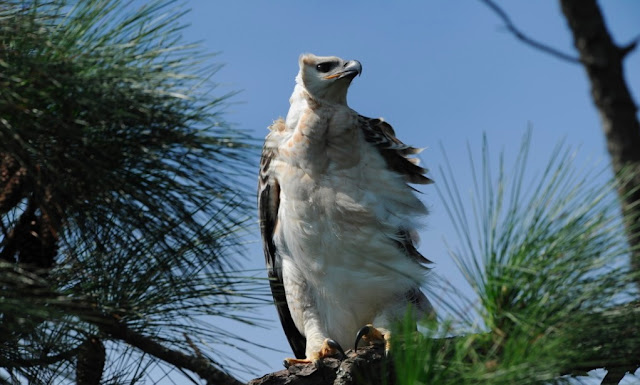The Springtastc blog post uploaded on the 16th September was introducing a warming and wetting of the landscape, frogging weather and the expectation of snake weather. Just three days later, and I see my first South African snake. This amazing Rock Python, which must have been at least 2.5 meters long, slides across a gravel track out in the Mount Moreland sugarcane fields. It stretched right across the road and was casually heading into the scrub when it must’ve got a whiff of me. It turned and bolted across the road from where it had come from. Those beasts can move quickly when they want to!
This was the day before Mia flew in from Denmark. And after collecting her from King Shaka Airport late on Wednesday afternoon we rushed around to the Mount Moreland nest. As dusk quickly drew the curtain of darkness, a surreal silhouette of the incubating Crowned Eagle sat atop the nest. Twilight offered us plenty of bats as they flittered above the river, Fiery-necked Nightjars called, and while watching a Spotted Eagle Owl on the roadside down the car beams, a Large Spotted Genet saunters across the road. Ever since I’ve known her Mia is has been some sort of magnet for wildlife spectacles, starting of course with one of our first days together out in Mongolia, where suddenly three wolves appeared, apparently abandoning an ambush on gazelles.
I now have my partner here… feeling a little humbled because my ‘field appy’ put me to shame on the first day by telling me which of the pair on this nest was the male and which was the female -followed shortly after by confirmation that the male can indeed do a little incubation, much doubted by me in the past. Over the next ten days we will get stuck in to surveying the Durban nests, attempting to catch remaining 2011 juveniles, and maybe time to put up another camera or two.
 |
| The female eagle at Victoria Country Club is unfazed by our observations. |
Just recently Zimbali Estate has confirmed that they will sponsor a camera diet study on their nest. Awesome – thanks ZEMA!
Finally, I'd like to do send you off to check out a couple of other Crowned Eagle blogs.
A nest that is currently active and should provide fantastic entertainment this season
http://crownedeaglediary.
And the other, a few amazing photos from one of the 2011 breeding nests.
http://www.nightbirds.co.za/


























































